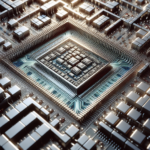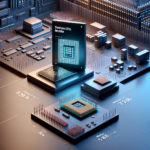The Role of CPUs in Medical Imaging Systems

The Role of CPUs in Medical Imaging Systems
Medical imaging systems have revolutionized the field of healthcare, providing critical insights into the human body that aid in diagnosis, treatment planning, and monitoring. At the heart of these sophisticated systems lies the Central Processing Unit (CPU), a crucial component that drives the performance and efficiency of medical imaging technologies. This article delves into the role of CPUs in medical imaging systems, exploring their functions, importance, and future trends.
Understanding Medical Imaging Systems
What Are Medical Imaging Systems?
Medical imaging systems are technologies used to create visual representations of the interior of a body for clinical analysis and medical intervention. These systems encompass a variety of modalities, including:
- X-ray Imaging
- Computed Tomography (CT) Scans
- Magnetic Resonance Imaging (MRI)
- Ultrasound Imaging
- Positron Emission Tomography (PET) Scans
Each of these modalities relies on different physical principles and technologies to generate images, but they all share a common need for powerful computational resources to process and analyze the data they collect.
The Importance of CPUs in Medical Imaging
The CPU is the brain of any computing system, responsible for executing instructions and processing data. In medical imaging systems, the CPU plays a pivotal role in several key areas:
- Image Acquisition: The CPU controls the hardware components that capture raw data from the patient.
- Image Processing: The CPU processes raw data to generate clear and accurate images.
- Image Analysis: Advanced algorithms running on the CPU analyze images to detect abnormalities and assist in diagnosis.
- Data Management: The CPU manages the storage, retrieval, and transmission of imaging data.
CPU Functions in Medical Imaging Systems
Image Acquisition
During image acquisition, the CPU coordinates the operation of various hardware components, such as sensors, detectors, and data converters. It ensures that the data is captured accurately and efficiently. For example, in an MRI system, the CPU controls the timing and strength of magnetic fields and radiofrequency pulses to capture detailed images of the body’s internal structures.
Image Processing
Once the raw data is acquired, the CPU processes it to generate images. This involves complex mathematical computations and algorithms, such as Fourier transforms, filtering, and reconstruction techniques. The CPU’s processing power directly impacts the speed and quality of image generation. High-performance CPUs enable real-time image processing, which is crucial for procedures that require immediate feedback, such as interventional radiology.
Image Analysis
Advanced medical imaging systems incorporate sophisticated image analysis algorithms to assist healthcare professionals in diagnosing and monitoring diseases. These algorithms, often powered by artificial intelligence (AI) and machine learning (ML), run on the CPU to detect patterns, measure anatomical structures, and identify abnormalities. For instance, AI algorithms can analyze CT scans to detect early signs of lung cancer, significantly improving diagnostic accuracy and patient outcomes.
Data Management
Medical imaging generates vast amounts of data that need to be stored, retrieved, and transmitted securely. The CPU manages these tasks, ensuring that data is organized efficiently and accessible when needed. It also handles data compression and encryption to optimize storage space and protect patient privacy. In modern healthcare settings, CPUs facilitate seamless integration with electronic health records (EHR) systems, enabling healthcare providers to access and share imaging data across different platforms.
Challenges and Solutions
Computational Demands
Medical imaging systems require immense computational power to handle the complex tasks involved in image acquisition, processing, and analysis. As imaging technologies advance, the demand for higher performance CPUs continues to grow. To address this challenge, manufacturers are developing multi-core and parallel processing CPUs that can handle multiple tasks simultaneously, significantly improving processing speed and efficiency.
Real-Time Processing
Real-time processing is critical in many medical imaging applications, such as intraoperative imaging and image-guided interventions. Delays in image processing can compromise the accuracy and safety of these procedures. High-performance CPUs with low latency and high throughput capabilities are essential to meet the real-time processing requirements of these applications.
Energy Efficiency
Medical imaging systems often operate continuously, consuming significant amounts of energy. Energy-efficient CPUs help reduce power consumption and heat generation, enhancing the system’s reliability and longevity. Manufacturers are incorporating advanced power management features and optimizing CPU architectures to achieve better energy efficiency without compromising performance.
Future Trends in CPU Technology for Medical Imaging
Artificial Intelligence and Machine Learning
The integration of AI and ML in medical imaging is transforming the field, enabling more accurate and efficient image analysis. CPUs with specialized AI accelerators and neural processing units (NPUs) are being developed to handle the computational demands of AI algorithms. These advancements will enhance the capabilities of medical imaging systems, enabling faster and more accurate diagnoses.
Quantum Computing
Quantum computing holds the potential to revolutionize medical imaging by solving complex problems that are currently beyond the reach of classical computers. Quantum CPUs can perform parallel computations at an unprecedented scale, enabling faster image processing and analysis. While still in the experimental stage, quantum computing could significantly impact the future of medical imaging.
Edge Computing
Edge computing involves processing data closer to the source, reducing latency and bandwidth requirements. In medical imaging, edge computing can enable real-time image processing and analysis at the point of care, improving the speed and accuracy of diagnoses. CPUs designed for edge computing are optimized for low power consumption and high performance, making them ideal for portable and point-of-care imaging devices.
FAQ
What is the role of the CPU in medical imaging systems?
The CPU in medical imaging systems is responsible for controlling hardware components during image acquisition, processing raw data to generate images, running advanced image analysis algorithms, and managing the storage, retrieval, and transmission of imaging data.
Why is real-time processing important in medical imaging?
Real-time processing is crucial in medical imaging applications that require immediate feedback, such as intraoperative imaging and image-guided interventions. Delays in image processing can compromise the accuracy and safety of these procedures, making high-performance CPUs essential for real-time processing.
How do AI and ML impact medical imaging systems?
AI and ML enhance medical imaging systems by enabling more accurate and efficient image analysis. AI algorithms can detect patterns, measure anatomical structures, and identify abnormalities, improving diagnostic accuracy and patient outcomes. CPUs with specialized AI accelerators are being developed to handle the computational demands of these algorithms.
What are the challenges faced by CPUs in medical imaging systems?
CPUs in medical imaging systems face challenges such as high computational demands, the need for real-time processing, and energy efficiency. Manufacturers are addressing these challenges by developing multi-core and parallel processing CPUs, optimizing CPU architectures for low latency and high throughput, and incorporating advanced power management features.
What future trends are expected in CPU technology for medical imaging?
Future trends in CPU technology for medical imaging include the integration of AI and ML, the development of quantum computing, and the adoption of edge computing. These advancements will enhance the capabilities of medical imaging systems, enabling faster and more accurate diagnoses and improving patient care.
Conclusion
The role of CPUs in medical imaging systems is indispensable, driving the performance and efficiency of these critical healthcare technologies. From image acquisition and processing to advanced image analysis and data management, CPUs are at the core of medical imaging systems. As technology continues to advance, the development of high-performance, energy-efficient CPUs will be essential to meet the growing demands of medical imaging applications. The integration of AI, quantum computing, and edge computing will further enhance the capabilities of medical imaging systems, paving the way for more accurate diagnoses and improved patient outcomes.




